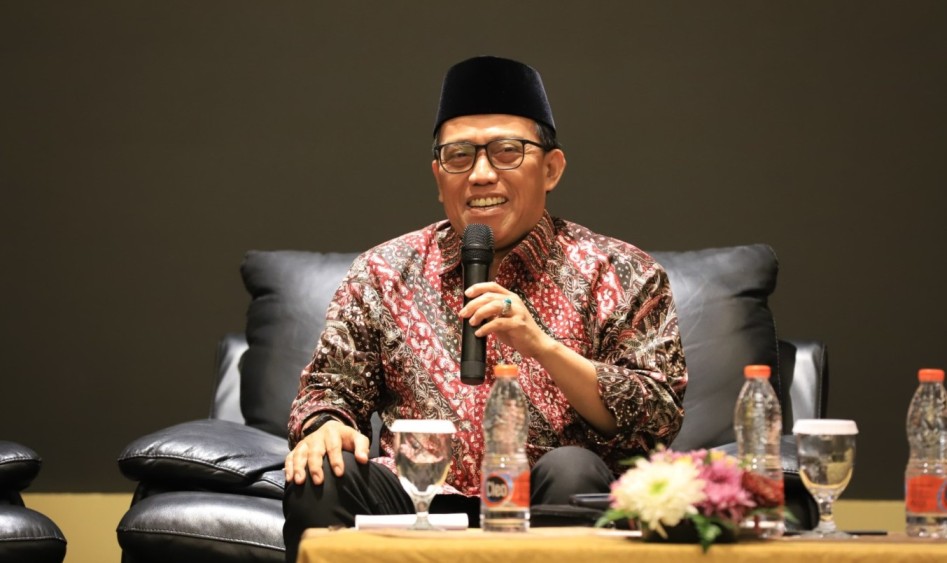Indonesia’s economy in 2022 grows by 5.31 pct

Indonesia’s economic growth continues to show resilience and is recovering more quickly, even though it recorded negative growth when it was hit by the COVID-19 pandemic in 2020.
Jakarta (Indonesia Window) – Statistics Indonesia (BPS) noted that Indonesia’s economic growth in 2022 managed to grow by 5.31 percent compared to the previous year (year-on-year/yoy).
According to BPS, the domestic economy in 2022 has managed to grow thanks to high growth in the fourth quarter of 2022 which rose by 5.01 percent on an annual basis (yoy), the Indonesian Cabinet Secretariat said in its official statement as quoted by Indonesia Window on Wednesday.
The Coordinating Minister for the Economy, Airlangga Hartarto, said that economic growth in 2022 was higher than that before the COVID-19 pandemic.
“Compared to December last year, last year’s fourth quarter, it grew 5.01 percent (yoy) and cumulatively, in 2022, the economy was able to grow at 5.31 percent,” Airlangga said in a virtual press statement, Monday (Feb. 6), which was broadcast on the Coordinating Ministry for Economic Affairs’ YouTube channel.
This growth is much higher than the pre-COVID-19 figure, which averaged five percent before the pandemic. And this is the highest figure since the government of President Joko Widodo, he said.
Even though it recorded negative growth when it was hit by the COVID-19 pandemic in 2020, the Indonesian economy continues to show resilience and is recovering more quickly, Airlangga noted.
He explained that the mix of various constructive policies and strategies taken by the government, one of which was through the COVID-19 handling and national economic recovery program, was the key to success in driving the national economy.
“In 2022, the (program) for handling COVID-19 and recovering the national economy was the keys to success,” he said.
In terms of demand, the majority of expenditure components in the fourth quarter of 2022 grew strongly, supported by a windfall of main commodities as exports were able to grow double digits, reaching 14.93 percent (yoy), meanwhile, imports grew 6.25 percent (yoy) driven by the increase in imports of capital goods and raw materials.
“The main contributor to GDP (gross domestic product) is consumption. This consumption sector grew 4.48 percent yoy. From investment or gross fixed capital formation, it grew 3.33 percent and household consumption was 5.7 percent,” he said.
However, the government consumption was still contracting by -4.77 percent yoy, he said.
In terms of supply, the business sector experienced positive growth in the fourth quarter of 2022.
The transportation and warehousing field constituted the sector with the highest growth of 16.99 percent (yoy), followed by the accommodation and food and beverage sector which grew by 13.81 percent (yoy) driven by increased community mobility and increased tourist visits, both foreign and domestic tourists.
The manufacturing industry sector, as the largest contributor to GDP, also recorded a positive growth of 5.64 percent (yoy), the senior minister said, adding that spatially all regions in Indonesia continue to experience growth.
Java Island as a contributor to the national economy was able to grow high at 56.48 percent (yoy), followed by Sumatra Island at 22.04 percent (yoy) and Kalimantan island at 9.23 percent (yoy).
Sulawesi Island grew 7.03 percent (yoy) and Maluku as well as Papua also grew 2.50 percent (yoy) in line with the high exports that occurred mainly due to the high demand for main commodity products abroad.
“Several leading indicators show bright prospects that will sustain Indonesia’s economic growth amidst a slowdown in global economic performance,” he said.
Domestic demand would remain the main pillar of the national economy in 2023, reflected in the consumer confidence index which is still high and illustrates optimism that the Indonesian economy can get even stronger in the future, Airlangga said.
Indonesia’s external sector indicators also show relatively good and controlled conditions, reflected in the current account surplus, increasing foreign exchange reserves, positive despite slowing exports and imports, sloping government bond yields, the rupiah exchange rate and the composite stock price index which strengthened, and the ratio of Indonesia’s foreign debt to GDP at a safe level.
“The government will continue to be vigilant and anticipatory of the global economic slowdown which will reduce the level of demand,” the coordinating minister said.
Thus, the strengthening of the domestic core economy through consumption and investment would be the main factor to increase Indonesia’s economic resilience in 2023, because export performance which previously grew high is expected to slow down, he said.
Reporting by Indonesia Window

.jpg)








